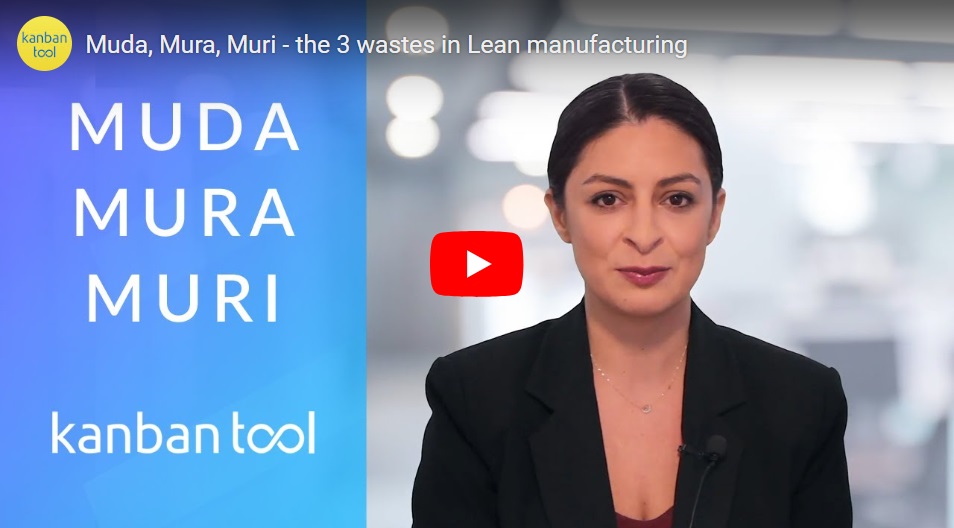What is Muri?

Translated from Japanese, “muri” 無理 means overburdening, unreasonableness or excessiveness. It is a part of the Toyota Production System’s 3M triad, along with muda – uselessness and mura – unevenness. The 3M Lean concept tackles all forms of waste possible to detect in a process, the removal of which should result in higher efficiency and faster delivery.
An example of muri is putting a machine under too big a strain - expecting it to produce more and faster than possible. It also applies to demanding the same of workers: placing them under pressure to work longer, harder, or quicker than they physically can. Understandably, such unreasonable expectations from people and equipment result in production defects and stops, injuries, and low morale. Regardless of how far along the Lean journey your company is, it is best to remove this kind of process overburdening.
Why does muri occur?
The most common reason for overburdening a process is not knowing its factual capacity or not taking it into account. A top-level manager asking to produce 25% more items than in previous weeks without assigning more workers or machines to a process would be a fitting example. Read our article on mura, to learn more about why exercising this kind of rapid output change demands hurts your company.
Another example of the same kind of unreasonableness is not educating workers on the efficient use of the machines or tools they utilize. Or, worse still, not checking whether those machines are operating as expected, faultlessly. It too can skew the ratio between the time needed to process a work item and the time assigned for the job by managers.
Lastly, muri occurs when there is no efficient communication between all partakers - a problem that connects to all the other reasons for creating excessive demands from workers or machines.
How to find and reduce muri?
Defective products and unplanned production stops can have multiple causes, not just muri. The simplest way to spot muri in your process is to look out for stressed-out, frustrated, or angry employees and machines operating without pause, not even for maintenance stops.
Once you know where muri presents, here’s how you can address it:
Step 1: Match the expected output with process capability
(or the other way round)
However you look at it, the ratio between how much product you want delivered and the process’ capability have to match. Whether you choose to adjust the demand to the team’s size and ability or invest in more work power to deliver the desired output - that’s your decision. But the two must remain aligned for muri to be minimized.
Step 2: Value-map the process steps
Thoroughly analyze all the stages of processing work to allow for an accurate estimation of the time needed to complete them. It will enable you to set them as neither too short nor too long - as that would be yet another form of waste. It will be most sensible to identify the process steps for each task through value mapping, simultaneously taking stock of any unnecessary processing.
Step 3: Standardize
Standardization of all process steps will help remove any uncertainty from the protocol and need to consult up the chain. You can achieve this through a systematic 5S exercise or the TPM and SMED measures - for equipment management in particular. Ensuring a standard across all areas of the process should also extend to work done by external parties or internal teams from other departments. The more consistency across various team goals and expectations you’ll achieve, the less muri there will be.

Step 4: Create pull-based systems
Application of a pull-based process like Scrum or Kanban with its work in progress limits will work towards getting things finished faster. At the same time, it will help you not to push all tasks at once onto the team. In the quite common cases, where completed work of one team becomes the backlog of another team’s process, it will pay to consider WIP limits not only at one team’s level. You should also analyze the relationship between all the connected teams’ processing limits. It will often be necessary to adjust the team sizes or allow a buildup of items in the “queuing” stages to even out various teams’ capacity.
Step 5: Pay attention to bottlenecks
If you’re looking for a way of jump-starting muri elimination, take note of where in the process bottlenecks form. Working on better processing of tasks that always end up queuing for a long time will speed up the process in the short term and are likely to reveal the main issue within it. Bottlenecks crop up when a team cannot process items at a given stage fast enough - adding more people to that stage, or training the existing team to get better at the job may be the most straightforward solution.
Did you know?
A visual pull-based digital Kanban Tool® board will make your process bottlenecks apparent as soon as they occur, speeding up your response to clear them away. Try now!
Step 6: Error-proof the production
Actively work on limiting and preventing errors, error-proofing every process step, and implementing practices that help monitor a problem’s presence, i.e., Andons. It’s also helpful to introduce Jidoka - solutions that pause the line as soon as a difficulty is detected. They either work as an employee stopping or demanding the stop of all processes or as autonomous systems spotting irregularities and flagging them for a worker’s attention then and there.
Step 7: Don’t forget the other “Ms”
Finally, make sure you’re tackling the other two “Ms” along with muri: muda and mura. Minimizing these remaining forms of waste will help you keep tabs on muri and make your process streamlining efforts more comprehensive.
While muda deals with the process more than people, muri and mura impact your team the most. Being put under constant stress, working at a neck-breaking pace one week, and feeling useless another does not make for happy workers. And unhappy teams don’t make up successful companies! Follow Toyota’s advice on eliminating all these forms of waste to get your team and process closer to being as efficient as the automaker giant’s.
